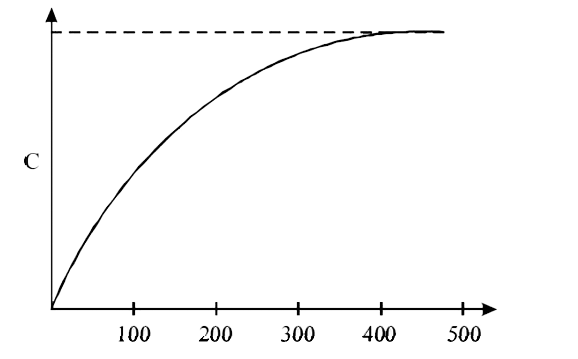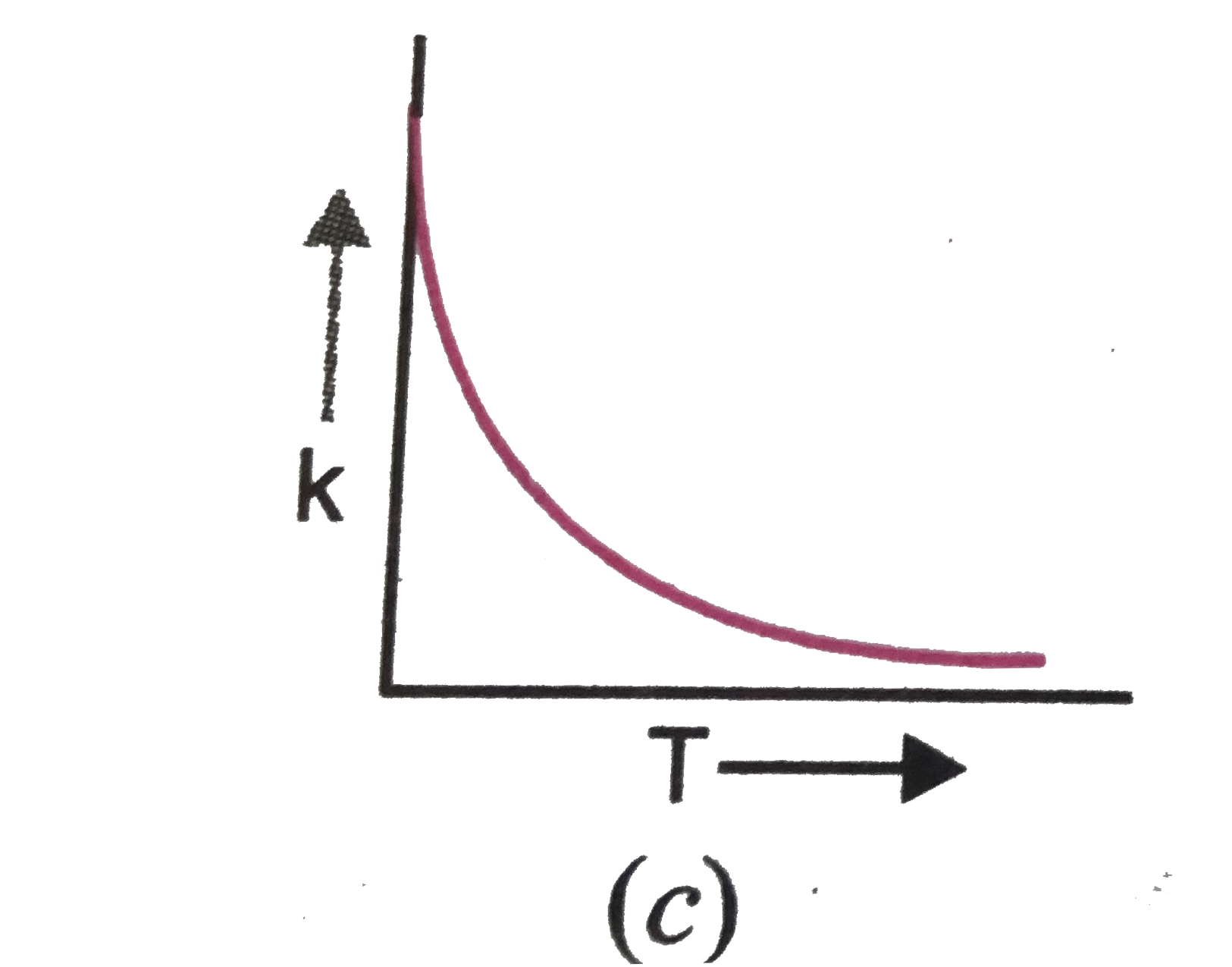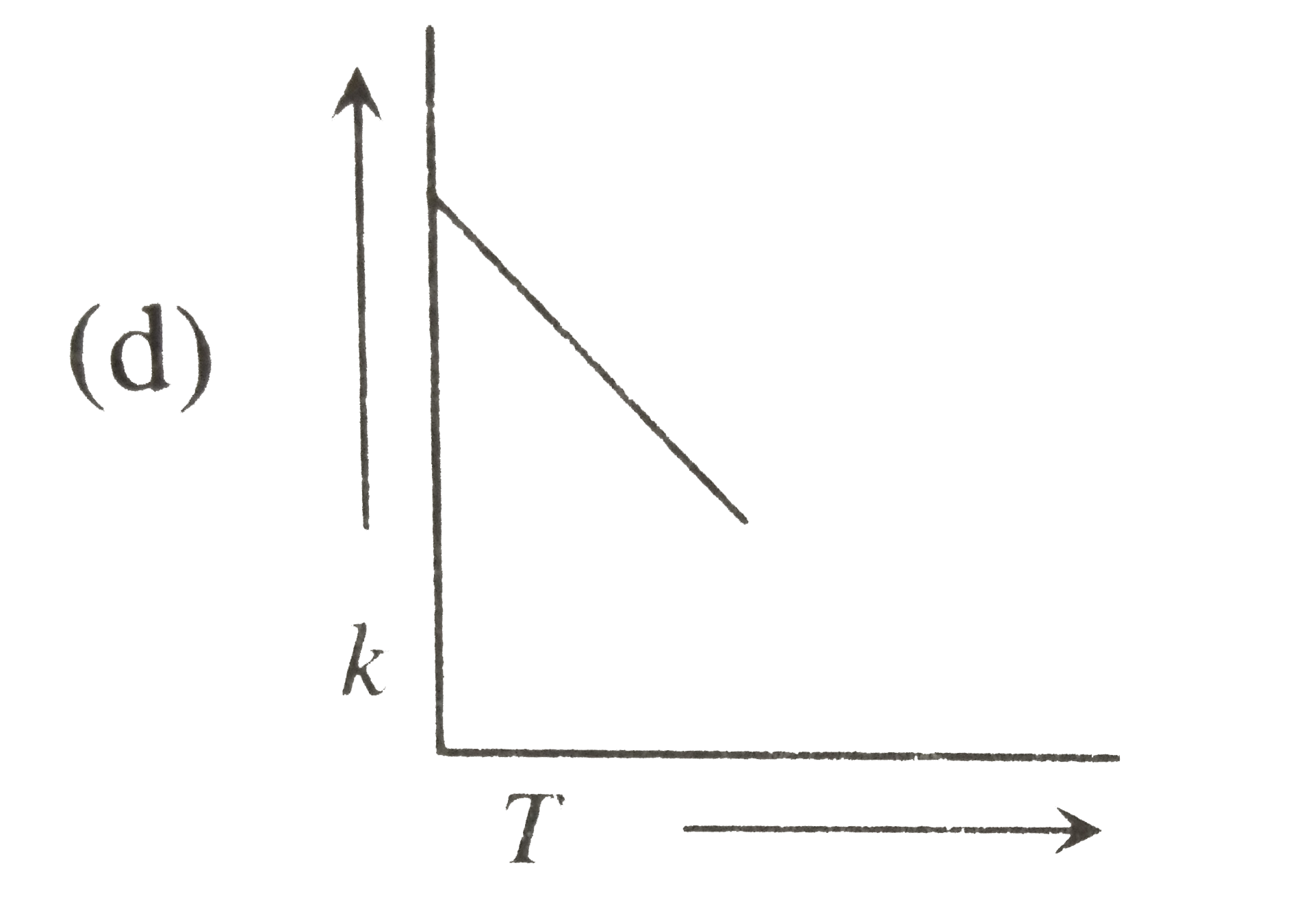The figure below shows the variation of specific heat capacity (C) of a solid as a function of temperature (T). The temperature is increased continuousely form 0 to 500K at a constant rate. Ignorign any volume change, the following statement (s) is (are) correct to a reasonable approximation.

The rate at which heat is absorbed in the range 0-100K varies linearly with temperature T.
Heat absorbed in increasing the temperature from 0-100K is less than the heat required for increasing the temperature from 400-500K.
There is no change in the rate of heat absorption in the range 400-500K.
The rate of heat absorption increases in the range 200-300K.
The correct Answer is:A, B, C, D
(a,b,c,d)
We know that dQ=mCdT in the range 0 to 100K
From the graph, C increases linearly with temperature
therefore the rate at which heat is absorbed varies linearly
with temperature. Option (a) is correct
As the value of C is greater in the temperature range 400−<br>500K, the heat absorbed in increasing the temperature from
0−100K is less than the heat required for increasing the
temperature from 400−500K option (b) is correct.
From the graph it is clear that the value of C does not
change in the temperature range 400−500K, therefore there
is no change in the rate of heat absorption in this range.
Option (c) is correct.
As the value of C increasing from 200−300K, the rate of heat
absorption increase in the range 200−300K. Option (d) is
also correct.
Topper's Solved these Questions
Similar Questions
The temperature change versus heat supplied curve is given for 1 kg of a solid block. Then which of the following statement(s) is/are correct:

View SolutionPlots showing the variation of the rate constant (k) with temperature (T) are given below. The plot that follows Arrhenius equations is
View Solution
Knowledge Check
The figure shows the variation of specific heat capacity (C ) of a solid as a function of temperature (T). The temperature is increased continuously from 0 to 500 K at a constant rate. Ignoring any volume change, the following statements(s) is/are correct to a reasonable approximation.
 AThe rate at which heat is absorbed in the range 0-100 K varies linearly with temperature TBHeat absorbed in increasing the temperature from 0-100 K is less than the heat required for increasing the temperature from 400-500 KCThere is no change in the rate of heat absorption in the range 400-500 KDThe rate of heat absorption increases in the range 200-300 K
AThe rate at which heat is absorbed in the range 0-100 K varies linearly with temperature TBHeat absorbed in increasing the temperature from 0-100 K is less than the heat required for increasing the temperature from 400-500 KCThere is no change in the rate of heat absorption in the range 400-500 KDThe rate of heat absorption increases in the range 200-300 KPlots showing the variation of the rate constant (k) with temperature (T) are given below. The plot that follows the Arrhenius equation is
A B
B C
C D
D
Plots showing the variation of the rate constant (k) with temperature (T) are given below. The plot that follows the Arrhenius equation is
A B
B C
C D
D
Plots showing the variation of the rate constant (k) with temperature (T) are given below. The plot that follows the Arrhenius equation is
View SolutionThe specific heat of many solids at low temperatures varies with absolute temperature T according to the relation S=AT3, where A is a constant. The heat energy required to raise the temperature of a mass m of such a solid from T = 0 to T = 20 K is
View SolutionWhen 1 mole gas is heated at constant volume, temperature is raised from 298 to 308 K. Heat supplied to the gas in 500 J. Then, which statement is correct ?
View SolutionElectrical resistance of certain materials, known as superconductors, changes abruptly from a nonzero value of zero as their temperature is lowered below a critical temperature TC(0). An interesting property of super conductors is that their critical temperature becomes smaller than TC(0) if they are placed in a magnetic field, i.e., the critical temperature TC(B) is a function of the magnetic field strength B. The dependence of TC(B) on B is shown in the figure.
 .
.
In the graphs below, the resistance R of a superconductor is shown as a function of its temperature T for two different magnetic fields B1(solid line) and B2 (dashed line). If B2 is larget than B1 which of the following graphs shows the correct variation of R with T in these fields?
View SolutionTwo solid bodies of equal mass m initially at T=0∘C are heated at a uniform and same rate under identical conditions. The temperature of the first object with latent heat L1 and specific heat capacity in solid state C1 changes according to graph 1 on the diagram. the temperature of the second object withe latent heat L2 and specific heat capacity in solid state C2 changes according to graph 2 on the diagram. based on what is shown on the graph, the latent heat L1andL2 and the specific heat capacities C1andC2 in solid state obey which of the following relationships?

View Solution
